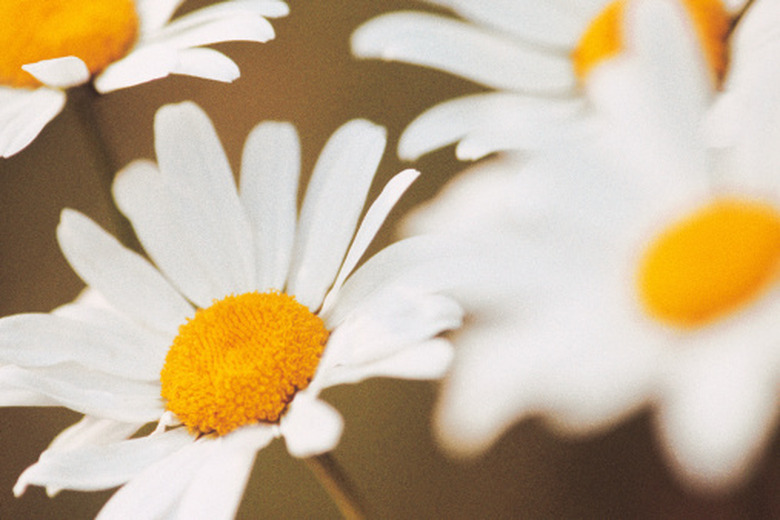How To Grow Shasta Daisies In Pots
Shasta daisies (Leucanthemum) are what many imagine when they think of daisies. The white radiating petals of each flower surround a bright yellow eye. The daisies grow on tall 1- to 3-foot stems. The shorter growing varieties work well in both indoor and outdoor pots. When grown indoors or in subtropical climates, the Shasta daisy provides year-round blooms. It grows as a herbaceous perennial in areas that experience frost, dying back each fall and returning in spring unless the pots are brought indoors for winter.
Step 1
Plant the Shasta daisy plant in a 10- to 12-inch diameter pot. Set the plant in the pot at the same depth it was growing at in its nursery container.
- Shasta daisies (Leucanthemum) are what many imagine when they think of daisies.
- It grows as a herbaceous perennial in areas that experience frost, dying back each fall and returning in spring unless the pots are brought indoors for winter.
Step 2
Set the pot in an area that receives full sunlight. Outdoor pots tolerate light morning shading. Place indoor pots near a south-facing window or other brightly lit location to ensure best flowering.
Step 3
Water the pots when the top inch of soil dries. Outdoor daisies may require one to two waterings a day depending on the heat and how quickly the soil in the pots dries. Indoor plants typically need watering once or twice a week.
Step 4
Fertilize the daisies once monthly when the plants are actively growing with a soluble fertilizer at the rate recommended on the label. Bedding plants rarely require fertilization, but potted daisies depend on fertilization for all their nutritional needs.
- Set the pot in an area that receives full sunlight.
- Outdoor daisies may require one to two waterings a day depending on the heat and how quickly the soil in the pots dries.
Step 5
Cut off the old flowers with shears when they begin to wilt. Remove the flower stem above the top set of leaves on the stem. Flower removal, called deadheading, encourages the Shasta daisy to send up more flowering stems.
Shasta Daisies Look Like?
Shasta daisies, in classic daisy fashion, feature attractive white flowers that are a vivid yellowish-golden hue in the middle. The big, single flowers appear in May each year and remain all the way into the end of the summer. Becky" Shasta daisies, for example, typically reach 3 feet, while it's highly common for those of other varieties to grow to only 2 feet long. These plants typically do well in either partial shade or full sun. They're somewhat dense in appearance and have typical lengths of between 8 inches and 1 foot. The margins of the leaves are rather dull. Due to the strong differences in color, the foliage contrasts well with the pale flowers. Shasta daisies of the "Sonnenschein" variety actually feature pale yellow blooms.
- Cut off the old flowers with shears when they begin to wilt.
- Shasta daisies of the "Sonnenschein" variety actually feature pale yellow blooms.
Things Needed
- Potting soil
- Fertilizer
- Shears
Tip
Bring outdoor pots indoors before the temperatures drop below 40 degrees Fahrenheit in fall if you wish to grow them as a winter houseplant.
References
- Colorado State University: 2003 Perennial Plant of the Year: Leucanthemum "Becky"
- Chicago Botanic Garden: A Report on Leucanthemum × superbum and Related Daisies
- Missouri Botanical Garden: Leucanthemum × Superbum 'Becky'
- North Carolina State University Cooperative Extension: Chrysanthemum x Superbum
- Washington State University Clark County Extension: Shasta Daisy
- University of Vermont Department of Plant and Soil Science: Leucanthemum (Chrysanthemum)
- Aggie Horticulture: Shasta Daisy
- Perennial All-Stars: Jeff Cox
- Growing Perennials in Cold Climates; Mike Heger, Debbie Lonnee and John Whitman
- Michigan – Getting Started Garden Guide; Melinda Myers
